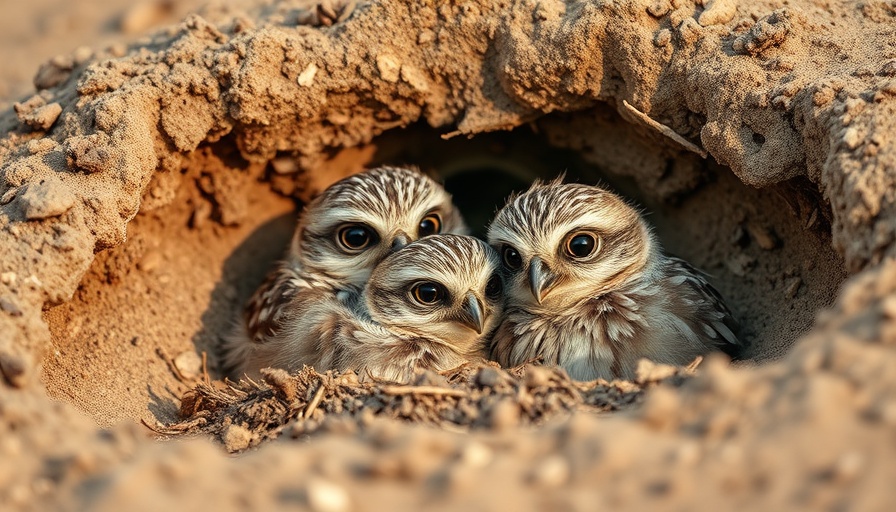
Meet the Burrowing Owl: Nature's Comedic Star
When it comes to quirky inhabitants of the western rangelands, the Burrowing Owl stands out not just for its charm but also for its unique way of life. Comparable in size to a can of beans perched on long legs, these owls are often affectionately dubbed “howdy birds” by cowboys, thanks to their delightful bobbing behavior that seems to greet anyone passing by.
Behavior and Habitat: More Than Meets the Eye
Unlike their more nocturnal relatives, Burrowing Owls are diurnal, embracing daylight fully to hunt and socialize. These remarkable birds take residence in abandoned burrows of prairie dogs and ground squirrels, showcasing their adaptability by modifying these tunnels to suit their nesting needs. While they may not be adept diggers, they ingeniously use their beaks to excavate and create safe spaces for rearing their young.
Survival Tactics: Cloaking in Sound
What truly makes the Burrowing Owl a master of disguise is its unique vocalization—a hiss resembling that of a rattlesnake. This clever mimicry serves as an effective deterrent against potential threats, ensuring their safety amidst the challenges of their environment. Their vocal skills paired with their distinctive appearance make them a staple of the western ecosystem.
The Role of Burrowing Owls in Ecosystem Balance
By living in colonies and nesting underground, Burrowing Owls contribute significantly to the ecological equilibrium. They help control the populations of their prey, such as insects and small rodents, thereby supporting the overall health of their surroundings. Their presence is vital, especially as habitats face the pressures of development and climate change.
Conservation Concerns: The Future of the Howdy Birds
As charming as they are, Burrowing Owls face numerous threats, including habitat destruction and pesticide use. Conservation efforts have become paramount to ensuring these quirky creatures continue to thrive in the wild. Engaging communities in understanding their ecological importance can foster a collective effort towards their preservation.
If you ever find yourself lucky enough to traverse the open rangelands of the West, remember to give a nod to these fascinating owls—you might just receive a bobbing “howdy” in return!
 Add Row
Add Row  Add
Add 




Write A Comment